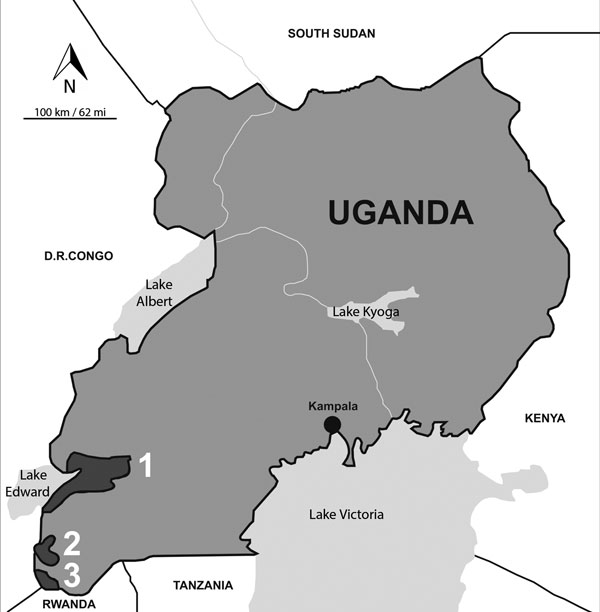Volume 19, Number 4—April 2013
Letter
Serosurvey of Dogs for Human, Livestock, and Wildlife Pathogens, Uganda
Figure

Figure. . . Map of Uganda showing 3 areas where a serosurvery for human and animal pathogens was conducted among dogs. 1, Queen Elizabeth National Park; 2, Bwindi Impenetrable National Park; 3, Mgahinga Gorilla National Park.
Page created: March 15, 2013
Page updated: March 15, 2013
Page reviewed: March 15, 2013
The conclusions, findings, and opinions expressed by authors contributing to this journal do not necessarily reflect the official position of the U.S. Department of Health and Human Services, the Public Health Service, the Centers for Disease Control and Prevention, or the authors' affiliated institutions. Use of trade names is for identification only and does not imply endorsement by any of the groups named above.